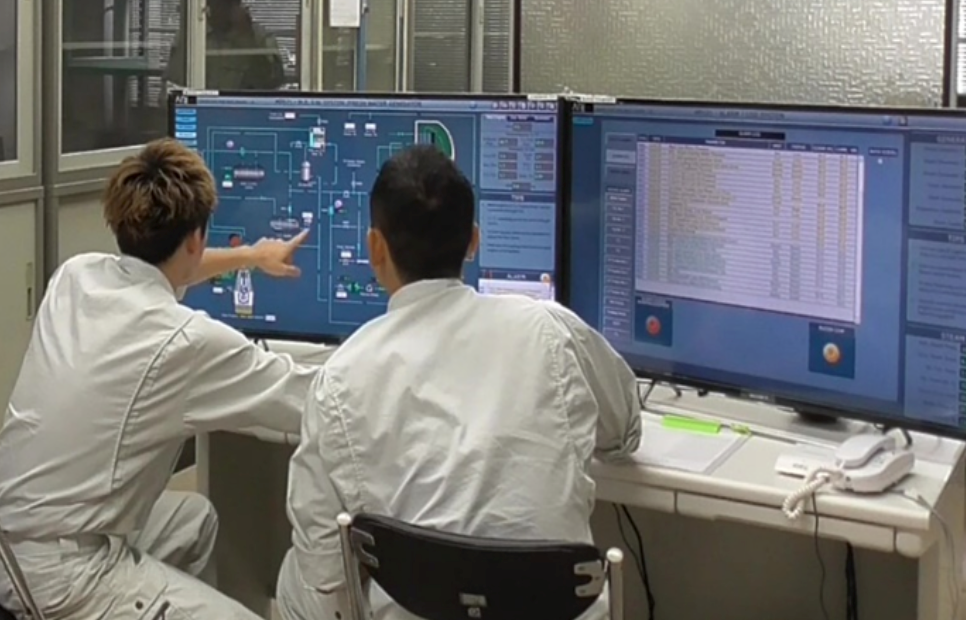
Professor Susumu Akeno, formerly of Tokyo University of Marine Technology and Science discusses how effective Engine-room Resource Management (ERM) training improve the safety, reliability, and efficiency of ship operations.
In the revision (specifically the Manila Revision) of the Standards for Training, Certification and Watchkeeping (STCW) of the Seafarers Treaty of 2010, in addition to having conventional technical knowledge and capabilities, officers are required to make sure their teams can function effectively and can perform their tasks correctly. This training, to improve recognition of the importance of team management practices and familiarity with ways to improve team capabilities, is called BRM (Bridge Resource Management) Training for the Masters and Officers and ERM (Engine-room Resource Management) Training for the ship’s engineers.
Most serious marine incidents, such as ship collisions and groundings, are thought to be the result of a chain of errors caused by human factors during ship handling operations. The purpose of BRM training is to prevent marine incidents by breaking this chain of human errors, through the promotion of effective team functioning. During BRM training, masters and officers learn how to manage personnel and use information, and gain better understanding of effective communication maintenance and situational awareness, and the importance of these, which are the principles of resource management. BRM training was introduced in the 1990s in the marine transportation industry in Europe and the U.S. After it had been in practice for some time, it was evaluated and found to be effective in preventing marine incidents, and was made mandatory for masters and officers.
All the same, there are not currently any International Maritime Organization (IMO) models for ERM training, and there is almost no data so far on the actual results of ERM training. Therefore, this training is being conducted through trial and error at each training facility and for each form of such training. So, first of all, is it really possible to say that ERM training is effective in preventing serious engine incidents that may affect ship operations?
The Purposes of ERM training

Figure 1. Marine Casualty Statistics
Prepared on the basis of data from the Japan Coast Guard's "Current Conditions of and Countermeasures against Marine Casualty" (2015 version)
According to the Japan Coast Guard’s statistics as of 2015, about 70% of marine incidents involving cargo ships over the past five years involved ship maneuvers, such as collisions and groundings, and only about 17% were engine incidents. (Refer to Fig. 1(a)). Anthropogenic causes, such as poor engine handling, accounted for about 60% of all engine incidents. There were many human-induced causes, as was also the case for ship manoeuvre incidents. (Refer to Fig. 1(b))
It must be noted, however, that the machinery division has limited work parameters, whereas the situation of the vessel itself, such as ship maneuvers, changes constantly and continuously, and always has the potential to lead to incidents if prompt and appropriate actions are not taken. In addition, even if there are human errors such as mal-operation of equipment or delays in responding to engine alarms, important equipment and systems are equipped with safety protection functions so that equipment shuts down automatically, and spare machines and other equipment are automatically put into operation by backup systems to prevent a major incident from occurring. In light of this, what are the specific causes of human-induced incidents related to engine and other machine facilities?
Every year, Nippon Kaiji Kyokai (Class NK) publishes in "A Summary of Damage" in its journals with statistics on the problems experienced by registered classifications of ships and examples of incidents. Although this document treats as serious incidents those damage incidents that have hindered ship navigation, the present author analyzed the cases of serious engine incidents (409 cases) that occurred during the eight years from 2006 on, and found the following tendencies.
- About 80% of serious engine incidents are caused by damage to the main diesel engines.
- About 70% of serious engine incidents are caused by human factors such as engine operation management faults and poor equipment maintenance.
In addition, there are many two-cycle diesel engine turbocharger damage incidents and four-cycle diesel engine bearing burn-out incidents, which are remarkable and serious engine incidents that occur repeatedly. In many cases, these incidents occur through the following mechanisms. (Refer to Fig. 2.)

Figure 2. Mechanisms of turbocharger damage in 2-cycle diesel engines and bearing burnout incidents in 4-cycle diesel engines
We can infer the following things from the results of these analyses and the mechanisms involved in this notable number of diesel engines incidents:
- Among incidents involving diesel engines, which account for the majority of serious engine incidents, repeated turbocharger damage and bearing burnout incidents are often caused by improper combustion or deterioration of the lubricating oil properties. However, these defects do not occur suddenly or without warning. It seems that some sign of abnormality occurred before the incident. For example, if the engine combustion is not as it should be, engine data changes such as an increase in the exhaust temperature of the main engine may have long since appeared, and deterioration of the properties of the lubricating oil may have been detectable during periodic strainer cleaning and analysis of the oil’s properties.
- Accordingly, there are many cases in which the incident was ultimately due to the fact that none of the crew members in the engine department noticed the signs of such abnormalities or that they all failed to take appropriate steps, such as investigating the cause of the abnormality, etc.
- If this is so, it is probable that the crew members were not sufficiently aware of how to evaluate engine operating conditions and perform inspections and maintenance of the engine, and that there might have been problems with the crew's knowledge of and ability to manage the engine plant.
- In addition, it seems that the on-shore ship manager was not paying sufficient attention to whether the crew was properly managing the engine plant. Accordingly, it can be said that these serious engine incidents were not only caused by crew errors, but also because the safety management system that is supposed to be coordinated between the sea and shore teams was not functioning adequately.
Thus, we cannot say that -- even though they may be due to human-induced causes -- most serious engine incidents result directly from human errors that could be eliminated simply by the effective use of the engine room teams.
On the other hand, most of the work in the engine room does indeed rely on teamwork that requires cooperation among team members in the engine department and the bridge watchkeepers, and that fully utilizes all resources, including personnel, equipment, and information. Effective functioning of the team through good communication and leadership is very important for the smooth implementation of teamwork. Therefore, it can be said that maintaining good team management creates a good workplace environment and consequently leads to the prevention of various engine incidents.
In addition, although this type of incident was not directly treated among the previous Class NK serious engine incident analysis, personal injury is a major risk during work in the engine room and is one of the serious outcomes that must be avoided. Since personal injury is also often attributed to human factors such as improper work procedures and communication errors, we believe that raising the level of ERM is widely effective in the quest to prevent incidents of personal injury.
Therefore, it is better to consider the purpose of ERM training not to be a means of direct engine incident prevention, but rather as a way to improve the safety, reliability, and efficiency of operations in the engine room, by assuring that the team functions effectively as it performs all its duties. In terms of this present author's experience, although their technical knowledge and capabilities may be high, I think not a few ship engineers find it difficult to work in a team. If we consider ERM training to be a means of improving the operating level of ship engineers during engine plant management, the purpose of the training might be clearer.
In addition, unlike the leadership training generally conducted by companies, the goal for ERM training is for all team members to participate, understand, and enhance their team capabilities. This is consistent with the recent trends in team management philosophy that hold that, in order for a team to function and achieve its goals, not only the leadership but also the so-called “followership” are important. That is, the contributions and opinions of all team members require consideration. I think this point of view supports the idea that although ERM training is important for the chief engineer and the ship’s engineer, it essentially involves the entire engine-room crew.
Introduction to ERM training
Parallel with BRM training, the goals of ERM training are for chief engineers and ship engineers to learn to manage personnel and use information, to gain more knowledge about effective communication maintenance and situation recognition, to appreciate the importance of such knowledge and to enhance their ability to perform tasks within a team, which are the principles of resource management.
The actual training is conducted using an engine room simulator where trainees use training materials to respond to problems that occur during work, and also function as a team to conduct case studies of problems that do not involve using the simulator. Training teams to respond to and resolve problems as a group is the best scenario in which to convey the skills of good team management. However, I think it is even better to use pre-task meetings (Tool Box Meeting) that are routinely carried out onboard, special works such as plant-ups and plant-downs during docking as training scenario.
The author conducted ERM training using a PC-based desktop engine room simulator with a 4th year student as a trainee. The outline of the training was as follows:
1) Training program
① Explanation of the training program
② Prior study of basic ERM knowledge, etc. and communication practice on such skills as reporting and communication
③ Briefing on the program: Description of training scenarios and training targets
④ Actual training based on a training scenario
⑤ Debriefing: Review and evaluation of the actual training experience
⑥ Repeat ④ and ⑤ again using the same training scenario
2) The training scenarios
① An abnormal main engine alarm occurs during ocean navigation. The training materials will consist of the response of the duty engineer and the oilers at that time.
② A high-level engine room bilge alarm occurs during the watch transfer between two engineers. The training materials will consist of the measures taken by the engineers at that time.
③ During work to prepare the engine plant for departure from port, the master requests the chief engineer to leave port immediately. The training materials will consist of the measures taken by the chief engineer and other engineers at that time.
3) Evaluation of training
We establish training targets that incorporate the principles of resource management for each scenario, and provide an evaluation sheet on which specific evaluation items can be entered. The results are evaluated on a four-point scale, and the self-evaluation of the trainee and the evaluation of the instructor are applied to the work of the team, not to the individual. In the debriefing, the trainees also exchange their own views on the good points and the points that need to be improved.

Figure 3. Training Scene
Key points shared by effective training activities
We conducted ERM training with students as trainees, but I felt that we needed to pay more attention to the following points that are indicative of effective training.
- Training scenarios should take into account the level of practical experience and knowledge of trainees, but especially those of trainees with little practical experience, such as students. Understanding their prior learning concerning technical response policies and methods in the face of problems is required.
- When using an engine room simulator for training, one prerequisite is that the trainee must understand the engine plant that is the model of the simulator and be able to operate the plant in the simulator. This is a bit different from BRM training, in which the configuration and operation of the equipment on the bridge are similar for any vessel. Engine room operations require the student to have time for sufficient understanding and familiarization, in advance of the training experience.
- When dealing with problems as a form of training, there is no one correct answer that deals with 100% of the problem situation. However, there is a basic philosophy and pattern of action. By establishing these principles as specific evaluation items for each scenario, the evaluation standards are unified and the evaluation can be quantified. For example, instead of a vague evaluation of whether the duty engineer communicated appropriately with the OILER, there was a concrete evaluation item to determine whether the duty engineer was able to share the information he obtained from the engine control room with the OILER in the engine room.
- After the actual training based on the scenario, all trainees look back on the training and exchange their views on good points and points that need to be improved. It is really important for the trainees themselves to notice any weaknesses needed to improve the training’s effectiveness. It is also important for instructors to provide persuasive explanations and evaluations to trainees based on their own experiences.
Recently, I read a newspaper article stating that there has been a growing movement in the medical world for people, even including the doctors themselves, to learn non-specialist technologies, such as team management, in order to prevent medical mistakes. The idea of team-management (Cockpit Resource Management) which began in the 1980s in the aerospace industry seems to be spreading from there not only to the shipping industry, but also to various industries such as railways, nuclear power, and even medicine.
Up to recently, attention has been focused on how the manager as a leader can make the team function effectively, but the emerging difference is the idea, as in ERM training, that the team members (the “followers”) are also trained together, and the goal is to raise the team’s strength, generated by all members. We expect that ERM's philosophy will be widely understood in the future and that the safety and efficiency of engine plant management and engine room work will thereby be improved.



